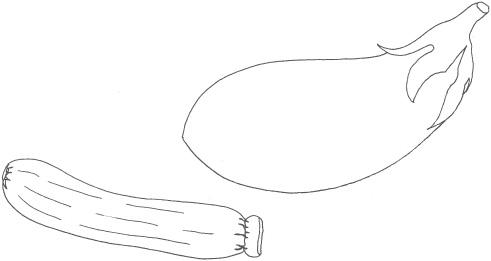The Thrifty Cookbook: 476 Ways to Eat Well With Leftovers (59 page)
Read The Thrifty Cookbook: 476 Ways to Eat Well With Leftovers Online
Authors: Kate Colquhoun
Tags: #General, #Cooking

BOOK: The Thrifty Cookbook: 476 Ways to Eat Well With Leftovers
13.57Mb size Format: txt, pdf, ePub
Cold boiled potatoes
Slice the potatoes and brown them gently in a little butter or oil in a frying pan. Add them to the eggs with some chopped herbs, if you have them, and a chopped garlic clove. Leftover kale or broccoli could also go in here.
Cold boiled potatoes and cheese
Slice the potatoes and add them with some crumbled cheese while the omelette cooks. Blue cheese is particularly luscious but most other cheeses, especially goat’s cheese, also taste great with potato. Add a few thyme leaves, too.
Ham, prosciutto or jamon serrano
These are ideal with sliced leftover boiled potatoes, prepared as above. Simply shred the meat roughly before adding to the eggs or directly to the omelette as it cooks. You could also add cooked asparagus, cooked spinach or some thinly sliced cooked fennel. Grate some Parmesan into the omelette as it begins to set.
Bacon
Lightly fry the last couple of rashers in the fridge and roughly chop them. Add them along with some chopped parsley, sliced spring onion and a grating of Cheddar, if you like.
Fish
Any leftover fish works well, as does flaked canned tuna or defrosted cooked prawns. Include a tablespoon of chopped tomato and a handful of chopped parsley, or try something more Scandinavian with smoked salmon and chopped dill.
Chorizo and red onion
Use a red onion and add some diced or sliced chorizo to the eggs, plus a little fresh thyme or oregano, if you have them.
Leftover chicken
Tear it into strips and add to the egg mixture with a good teaspoon of Onion Marmalade (see
page 42
) for sweetness, and some thyme leaves.
Vegetables
Any leftover vegetables can be used, including carrots, peas, beans and the like. Courgette and aubergine omelettes are particularly good for summery picnics – grill or brown the diced vegetables in a pan first and add to the eggs with some chopped spring onions.
Cheese and vegetable
All the classic combinations work well here: broccoli or cauliflower with Cheddar; spinach and ricotta; leek and goat’s cheese or feta; sweet potato and feta.
Italian fried pasta
See
page 188
.

If you want to be grand about it, you could call these crèpes, and I’m not sure why they are so popular on the Continent and yet ignored here. As a dedicated pancake lover, I find this contrary.
Filled pancakes are brilliant for using up leftovers. I make the batter first and then let it stand while I get the fillings ready. You can do it the other way around – batter does not need to stand – but, whatever you do, have a bowl of filling ready before you embark on the frying bit. Instead of standing at the stove making a production line of individual pancakes, I prefer to preheat the oven and make them all in one go: filling, rolling, then lining them up like soldiers in an ovenproof dish. A quick grating of cheese and they can go straight into the oven until the cheese has melted; then everyone can eat at the same time.
Use the shallowest frying pan you have, ideally around 20cm in diameter, and the heavier the better. Get it really hot with a very little shimmering (but not smoking) vegetable oil. This is harder to achieve with butter because it burns easily and tastes dreadful when it does.
Makes 10–12 pancakes
110g plain flour
2 large eggs
270ml milk (or milk mixed with a little water, if you prefer
)
2 tablespoons melted butter
a pinch of salt
your choice of filling (see
page 198
)
2–3 tablespoons vegetable oil hard cheese, such as Cheddar or Parmesan, for grating

Put the flour, eggs, milk, butter and salt in a bowl and mix with a hand whisk or electric beater until you have a smooth batter with the consistency of thick pouring cream. Leave to stand while you prepare the filling – see the suggestions overleaf.
Preheat the oven to 180°C/Gas Mark 4. To make the pancakes, heat the oil in a 20cm frying pan. When it is shimmering hot, pour all of it out into a mug or bowl. This will leave just the right amount of hot oil coating your pan.
Use a ladle to pour a little pancake batter into the pan, then lift the pan off the heat, tilting and swirling it so that the batter runs fast right around the pan, completely coating the bottom in a thin layer.
Other books
4 Yip/Tuck by Sparkle Abbey
Torpedo Run (1981) by Reeman, Douglas
Eternity Ring by Wentworth, Patricia
Wedding Song by Farideh Goldin
Soul Temptation (Souls Entwined) by Gregory, Nichelle
Cake: A Love Story by J. Bengtsson
Kiss of Flame (The Dragon's Virgin Tribute) by Martin, Madelene
Jury of One by David Ellis
Colters' Daughter by Maya Banks
DeVante's Coven by Johnson, SM




